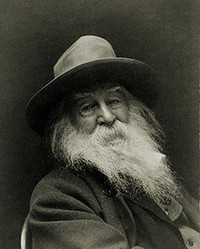Sometimes the place name will be pronounced in a strange way, with the syllable that the poet wants to rhyme being stressed, even if that alters the usual pronunciation of the place name. Limerick writers also often call upon the names of exotic places too, in order to exploit a name’s rhyming potential.
In other cases, rather than a place, a person’s name will be used at the end of the first line, for example:
There was a young fellow named Steven
Or
There was an old lady called Jane
It is also possible to write a non-traditional limerick that follows the standard form of a limerick, but doesn’t use a place name, or a person’s name at the end of the first line.
The first, second and fifth line of a limerick will generally have 8 syllables and the third and fourth line have 5, but this is not a strict rule.
In early limericks a version of the first line was repeated at the end to form the fifth line, but this is not usually done nowadays and a unique fifth line is almost always created by the writer.
Word play, twists of meaning, joke-style punch lines, and the inclusion of obscenities are often much prized by limerick writers.




 Best Mechanics Tool Set 2015: Top 5on 04/20/2015
Best Mechanics Tool Set 2015: Top 5on 04/20/2015
 Desktop vs laptop: Which is best?on 03/20/2013
Desktop vs laptop: Which is best?on 03/20/2013
 Top 4 Best Masticating Juicers 2014on 03/07/2013
Top 4 Best Masticating Juicers 2014on 03/07/2013
 What are Green Cards: US Lawful Permanent Residency Explainedon 02/18/2013
What are Green Cards: US Lawful Permanent Residency Explainedon 02/18/2013



Comments